 2000 Toyota Harrier I (XU10, facelift 2000) Dimensions, Size & Specs
2000 Toyota Harrier I (XU10, facelift 2000) Dimensions, Size & SpecsMeasurements of the 2000 Toyota Harrier I, engineered for optimal performance and comfort
| Dimensions | |
|---|---|
| Length: | 4575 mm180.1 in15.0 ft |
| Width: | 1815 mm71.5 in6.0 ft |
| Height: | 1665 mm65.6 in5.5 ft |
| Ground Clearance: | 180-185 mm7.1-7.3 in0.6-0.6 ft |
| Trunk Capacity: | 860 liter30.4 cu ft |
| Trunk Capacity (Max): | 2130 liter75.2 cu ft |
| Weight Specifications | |
| Curb Weight: | 1560-1730 kg3439-3814 lbs |
| Tire Specifications | |
| Rims Size: | Other Rims:
|
| Tire Size: |
|
The Toyota Harrier I (XU10) facelift produced from 2000 to 2002 is a mid-sized SUV that blends refined design with functional dimensions and practical features. Measuring 4575 mm (180.3 inches) in length, 1815 mm (71.5 inches) in width, and standing 1665 mm (65.6 inches) tall, this generation of the Harrier provides a balanced size suitable for urban driving and light off-road capabilities. The vehicle's ride height offers a ground clearance between 180 mm and 185 mm (7.1 to 7.3 inches), enhancing its ability to navigate uneven terrain while maintaining on-road comfort. Weighing between 1560 kg and 1730 kg (3442 to 3814 lbs) depending on the configuration, the Harrier I offers a solid, stable ride without sacrificing agility. The SUV comes standard with 16-inch rims (6.5J x 16 ET35) fitted with tires sized 215/70 R16 99S, contributing to a comfortable and confident handling experience. One of the standout features is its versatile luggage capacity, offering 860 liters of space with all seats in place, which expands dramatically to 2130 liters (about 30.4 to 75.2 cubic feet) when the rear seats are folded down. This makes the Harrier I not only a comfortable passenger vehicle but also a practical choice for families and those needing significant cargo space. Overall, the 2000-2002 Toyota Harrier I facelift exemplifies a well-rounded SUV with a size and weight that fit its category perfectly, catering to drivers who need both style and functionality.
Discover the standout features that make the 2000 Toyota Harrier I a leader in its class
Have a question? Please check our knowledgebase first.
The Toyota Harrier I (XU10, facelift 2000) features a length of 4575 mm (approximately 180.1 inches), a width of 1815 mm (about 71.5 inches), and a height of 1665 mm (around 65.6 inches). These dimensions place it firmly in the mid-size SUV category, providing a balanced presence on the road. Its size offers a good compromise between interior space and exterior maneuverability, making it convenient for urban driving while still offering ample room for passengers and cargo.
The curb weight of the Toyota Harrier I (XU10, facelift 2000) ranges between 1560 kg and 1730 kg (approximately 3439 to 3814 pounds). This weight range reflects variances due to trim levels and equipment. A curb weight in this bracket contributes to a stable, solid driving feel and enhances safety. However, heavier weight can slightly reduce fuel efficiency and acceleration compared to lighter SUVs. Toyota optimizes the Harrier's engine and transmission to balance this, delivering respectable performance and economy for its class.
The Toyota Harrier I offers a ride height or ground clearance between 180 mm and 185 mm (7.1 to 7.3 inches). This level of clearance is adequate for handling uneven urban roads, light off-roading, and moderate obstacles such as speed bumps and dirt roads. While not designed as a hardcore off-roader, the Harrier's ground clearance allows it to navigate varied terrain comfortably, striking a balance between SUV practicality and on-road stability.
With all seats in use, the Toyota Harrier I (XU10, facelift 2000) provides a generous luggage capacity of 860 liters (about 30.4 cubic feet). When the rear seats are folded down, this capacity significantly increases to 2130 liters (approximately 75.2 cubic feet), allowing for bulky and larger items to be accommodated. This flexibility is particularly useful for families, road trips, or transporting larger cargo, showcasing the practical design of the vehicle's interior space.
The standard tire size for the Toyota Harrier I is 215/70 R16 99S, fitted on 6.5J x 16 ET35 rims. This setup provides a good balance between ride comfort, road grip, and vehicle handling. The relatively tall tire profile (70 aspect ratio) helps absorb road imperfections, contributing to a smoother ride, while the 16-inch rims support stability and cornering performance. This combination favors everyday usability, making it suitable for urban and suburban driving conditions.
The Toyota Harrier I, with an exterior length of 4575 mm (180.1 inches) and a width of 1815 mm (71.5 inches), fits comfortably within the confines of a standard residential garage. Most single-car garages are designed around dimensions approximately 2400 to 3000 mm (94.5 to 118 inches) wide and 4800 to 6000 mm (189 to 236 inches) deep, which accommodates the Harrier's footprint with ample clearance. The vehicle’s height of 1665 mm (65.6 inches) also ensures compatibility with typical garage door heights. Owners should, however, factor in extra space for ease of entry and exit.
The Toyota Harrier I (XU10 facelift 2000) represents an update over its original XU10 generation launched in 1997. Dimensionally, the facelift model retains similar length, width, and height figures, preserving its mid-size SUV profile. The facelift mainly introduced cosmetic and minor mechanical improvements rather than drastic size changes, with length around 4575 mm, width approximately 1815 mm, and height near 1665 mm. This consistency ensured that the updated Harrier maintained its established balance of interior space, maneuverability, and road presence.
Against similar mid-size SUVs from the early 2000s, such as the Honda CR-V and Nissan Murano (early generation), the Toyota Harrier I holds its own in dimensions and offerings. Its length of 4575 mm and width of 1815 mm align closely with competitors, offering comparable passenger and cargo space. The Harrier stands out for its premium interior appointments and smooth ride quality, while maintaining a competitive ground clearance of around 180-185 mm. Its luggage capacity, especially with rear seats folded (2130 liters), is among the more generous, supporting versatility. Overall, the Harrier blends a sporty, refined SUV experience with practicality, matching or exceeding rivals in size and amenities for the period.
The 2000 facelift of the Toyota Harrier I (XU10) brought several key updates, including refreshed exterior styling with revamped front and rear bumpers, updated headlamp and taillight designs, and modernized interior trims. Mechanically, some models benefited from improved suspension tuning for enhanced ride comfort and handling precision. These changes aimed to keep the Harrier competitive and appealing in the growing SUV market segment. Despite being essentially a mid-cycle refresh, the facelift succeeded in refining the overall aesthetic and driving experience while maintaining the model’s reputation for reliability and comfort.
The Toyota Harrier I facelift utilized 16-inch rims sized 6.5J x 16 ET35, fitted with tires sized 215/70 R16 99S. This setup was designed to balance comfort and performance. The relatively tall sidewall (70 profile) of the tires enhances cushioning over rough surfaces, contributing to an overall smoother ride quality. The rim size and offset (ET35) optimize contact patches for stable handling and improved cornering. This wheel-tire combination is well-suited for the SUV’s urban and light off-road use, delivering confident driving dynamics while prioritizing passenger comfort.
Discover similar sized cars.
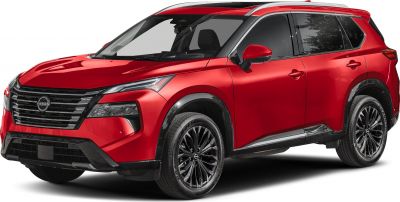
| Production: | 2025-present |
|---|---|
| Model Year: | 2024 |
| Length: | 4648-4710 mm183.0-185.4 in |
| Width: | 2144 mm84.4 in |
| Height: | 1689-1740 mm66.5-68.5 in |

| Production: | 2020-2023 |
|---|---|
| Model Year: | 2021 |
| Length: | 4648 mm183.0 in |
| Width: | 1839 mm72.4 in |
| Height: | 1689 mm66.5 in |
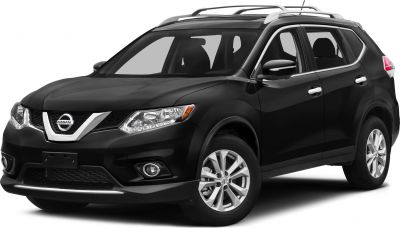
| Production: | 2013-2016 |
|---|---|
| Model Year: | 2014 |
| Length: | 4630 mm182.3 in |
| Width: | 1839 mm72.4 in |
| Height: | 1684 mm66.3 in |
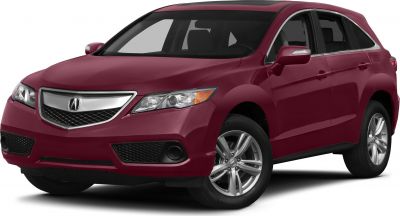
| Production: | 2013-2015 |
|---|---|
| Model Year: | 2013 |
| Length: | 4660 mm183.5 in |
| Width: | 1872 mm73.7 in |
| Height: | 1678 mm66.1 in |
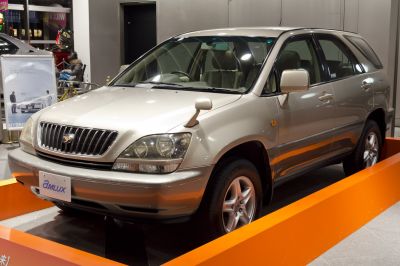
| Production: | 1997-2003 |
|---|---|
| Model Year: | 1999 |
| Length: | 4575 mm180.1 in |
| Width: | 1815 mm71.5 in |
| Height: | 1665 mm65.6 in |
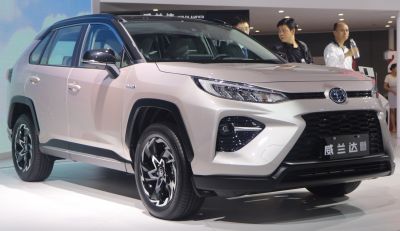
| Production: | 2019-present |
|---|---|
| Model Year: | 2020 |
| Length: | 4665 mm183.7 in |
| Width: | 1855 mm73.0 in |
| Height: | 1680 mm66.1 in |
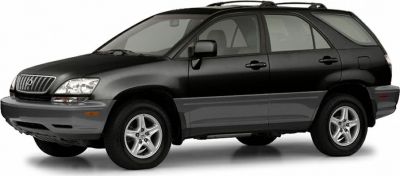
| Production: | 1997-2003 |
|---|---|
| Model Year: | 1999 |
| Length: | 4580 mm180.3 in |
| Width: | 1816 mm71.5 in |
| Height: | 1660 mm65.4 in |
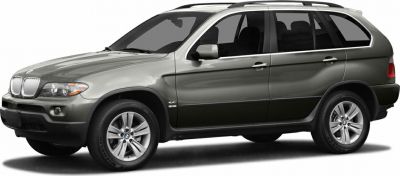
| Production: | 2003-2006 |
|---|---|
| Model Year: | 2003 |
| Length: | 4667 mm183.7 in |
| Width: | 2180 mm85.8 in |
| Height: | 1707-1715 mm67.2-67.5 in |
